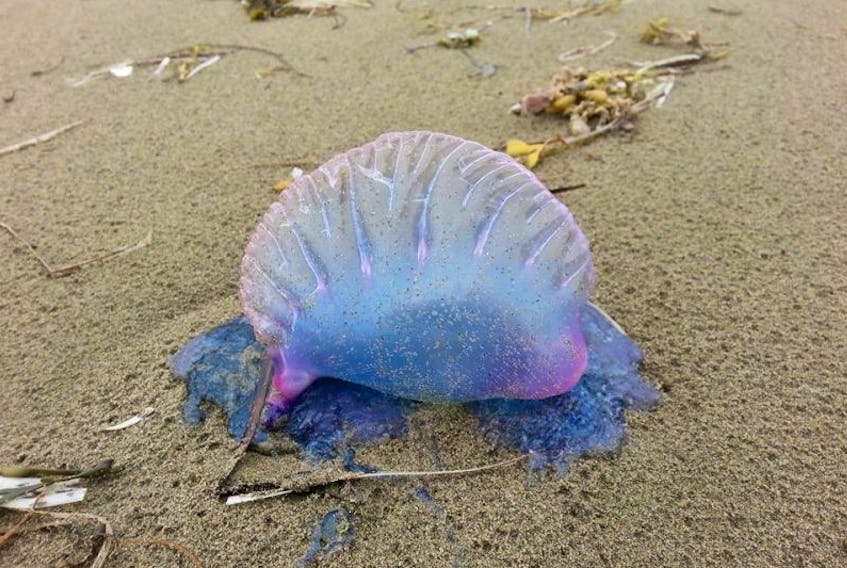“I was just walking down the beach, as I normally do. They were up towards the back of the beach, where there is a lot of rock. I think high tide must have washed them up,” Wendy Russell explained how she found them on the first beach at the park.
“They were just sitting around, being blown by the wind. They were very noticeable. But if you don’t know what they are then you wouldn’t know you are supposed to stay away from them.”
Russell took pictures of the animals and sent them to the Department of Natural Resources (DNR) for removal since their sting is very painful.
“They were bright purple blobs on the beach. The top polyp was sticking out of the sand and you could see them moving in the wind,” she said.
“I didn’t want to pick them up myself because I have some experience with wildlife and I know not to pick these guys up myself.”
Calls to the DNR weren’t returned by time of publication.
Russell saw many people walk by them without noticing them, making her believe they didn’t know what they were or how dangerous and painful their sting can be.
Man-of-war are often confused for jellyfish but are actually a type of siphonophore, a group of organisms that work together. Four polyps make up a man-of-war and their tentacles can be up to 165-feet-long, with a body that is 12-inches long and five-inches wide.
Even on land, their sting can be extremely painful. However it is more dangerous to be stung by them in the water. Some people have died after trying to swim back to shore after being stung by one.
Man-of-war float in the water in groups as large as 1000 or more and either drift along the current or fill their top polyp to catch the wind. Swimmers should leave the water when they spot these polyps floating along or move a safe distance away from them.
Anyone spotting a man-of-war on the beach should not touch it and notify the DNR immediately.
Man-of-war found on Kennington Cove beach
LOUISBOURG: On Sunday, a North Sydney woman spotted two Portuguese man-of-war on Kennington Cove Beach and people should be on the look out for the venomous animal on land and in water.

STORY CONTINUES BELOW THESE SALTWIRE VIDEOS








